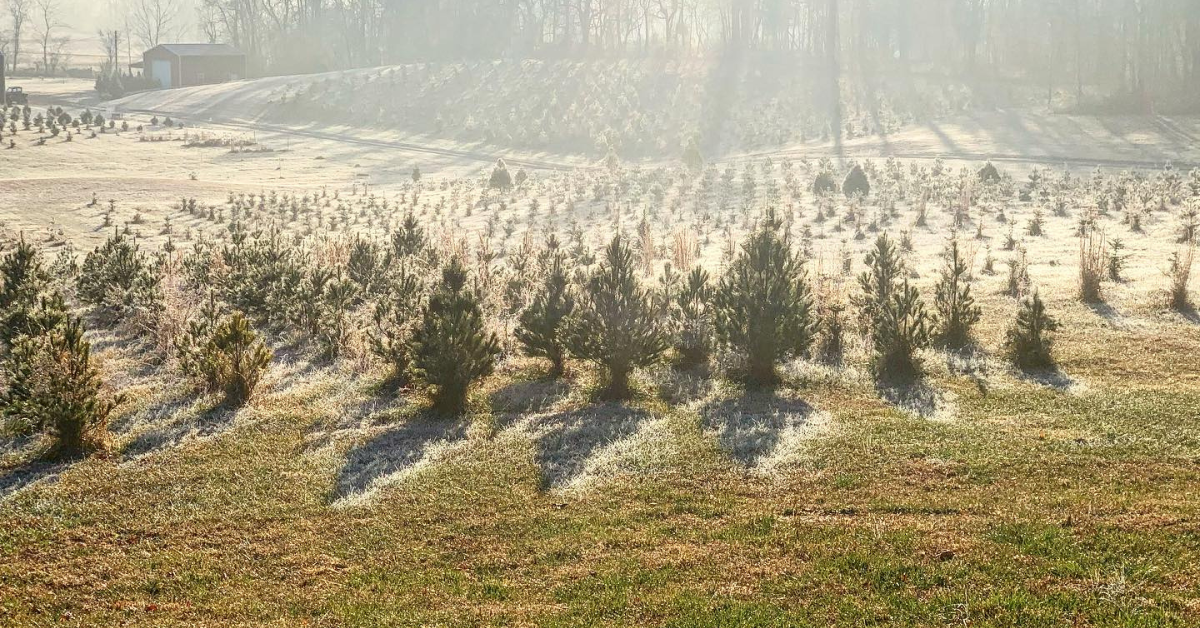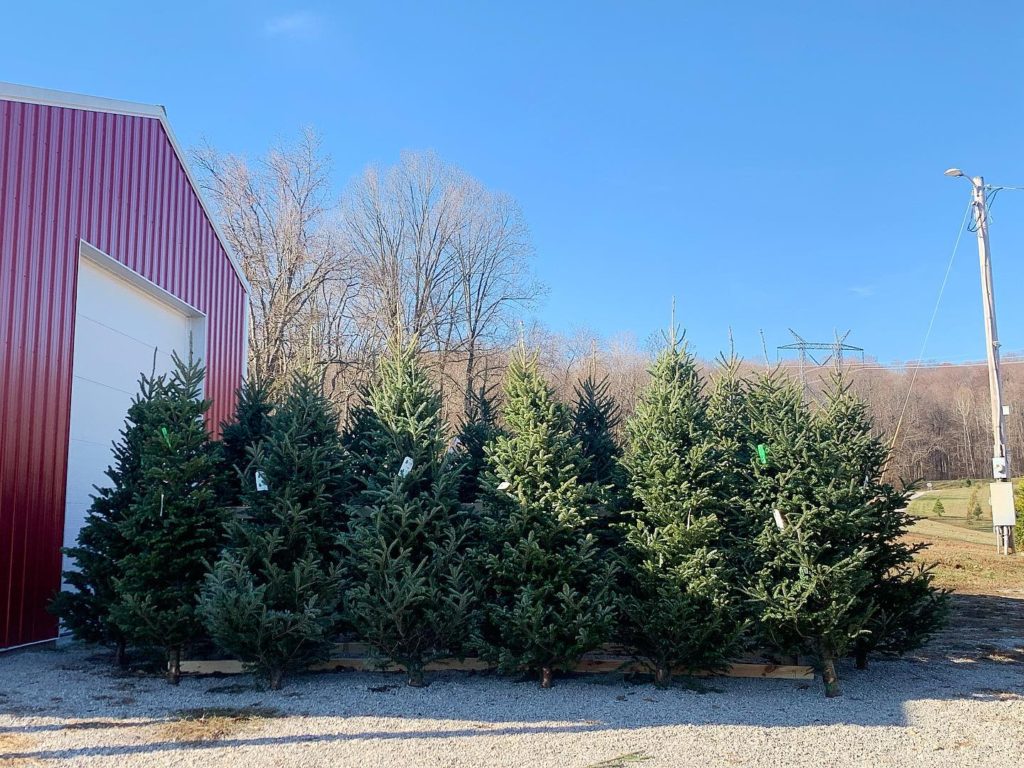Farms still feeling effects of 2012 drought, many growers getting out of business
Carol Johnson, Southern Indiana Business Report
A drought 10 years ago and higher costs for growers are driving up the price of real Christmas trees, estimated to be 12-24% higher this year, according to Purdue University.
Ashley Ratkovich of Ratkovich Farm in Fayetteville said she and her husband Scott reluctantly increased their prices this year on premium pre-cut Frasier firs because of shipping costs. Surprisingly, it hasn’t deterred buyers.
“We went to $12 a foot for the premium taller trees to break even and they sold out first,” she said.
Ratkovich Farm, 413 Fayetteville-Owen Road, opened Nov. 19. Demand for the pre-cut trees they ordered from Michigan has been strong. Ashley anticipates selling out of the popular fir trees by the first weekend of December or the following weekend.
The Ratkoviches have owned the tree farm since 2017 and planted their first trees in 2018. They expect to begin cutting and selling those first plantings in 2024. Because the growth cycle is slow and factors like drought and disease can cause significant loss, growers must replant every year.
The previous owner planted 100 to 300 trees a year, she said. The Ratkoviches plant 1,200 a year.
“We’ve got over 5,000 growing now. Of course, you lose some every year and some varieties don’t do well,” she said. “We’re looking forward to our own trees being ready so we don’t have so much in out of pocket costs.”
For years, Scotch and white pine were popular varieties, but these days, Ashley said customers want a Frasier fir. The Frasier fir requires a cooler climate than southern Indiana offers and sellers order them from states like Michigan. Ratkovich said the Canaan fir, which is better suited for Indiana, is what they planted.
“That’s what every Christmas tree farm in Indiana has because it grows in Indiana,” she said.
The couple bought the tree farm so Ashley could work from home while caring for their four children and to have a business they could all be involved in.
With their quaint barn and rustic gift shop, Ratkovich Farm looks like something out of a Hallmark movie, which Ashley said she hears a lot. But that’s because no one is there to see them shaping and pruning thousands of trees in the heat of summer.
“People always say, ‘You live in a Hallmark movie.’ And I say, ‘If Dirty Jobs and Hallmark had a baby that’d be us.”
Ashley Ratkovich
Greene County Trees
Over in Greene County, Al and Linda Eernisse have been growing Christmas trees since 1967 at Greene County Trees in Solsberry. Now 80 years old, Al has seen it all – droughts, fungus, insects and rodent damage.
“I have a shortage of trees like everybody else. We lost a lot of trees about five years ago that really got us out of our rotation. I’ve got enough trees for this season, but I don’t know after that,” he said.
Greene County Trees opened Nov. 19 and will continue to sell pre-cut white pine and spruces grown locally and imported Douglas and Frasier firs until it sells out.
Climate change and trees
For nearly 40 years, Eernisse sold his trees to retail lots in Bloomington, but after disease wiped out thousands of his trees four years ago, he no longer sells to retail lots and now sells trees from his Greene County farm, 6520 N. Dilly School Road.
“We had to cut and burn 30,000 trees four years ago because they had a fungus,” he said.
The trees were infected by one fungus at the top and another that damaged the root system.
“I think it’s due to climate change,” Eernisse said. “It’s not that the climate would affect the trees so bad, but it affects the environment around it.”
Eernisse isn’t ready to get out of the tree business yet, but he’s seen a lot of farmers leave the past few years. Growing Christmas trees is labor intensive and because it can be seven to 12 years for trees to mature, depending on the variety, Eernisse said young people are discouraged from getting into the tree business.
“Here’s the story, if it was easy everybody would do it,” he said. “I’m afraid it’s become a lost tradition.”
He no longer plants 15,000 trees or sells to the wholesale market.
“It’s making me tired just talking about it,” Eernisse said with a laugh. “I replant enough to satisfy the u-cut operation.
“Over 50 some years, I’ve got all the do-nots down … I can explain to anybody what not to do. It’s been a journey and the Lord has been good to us.”





